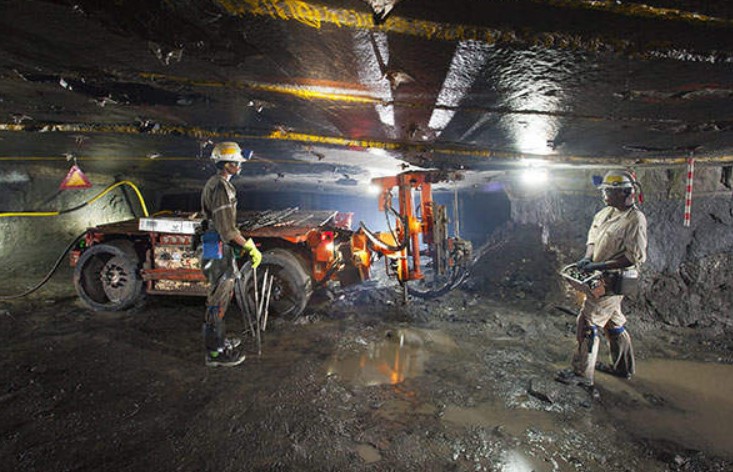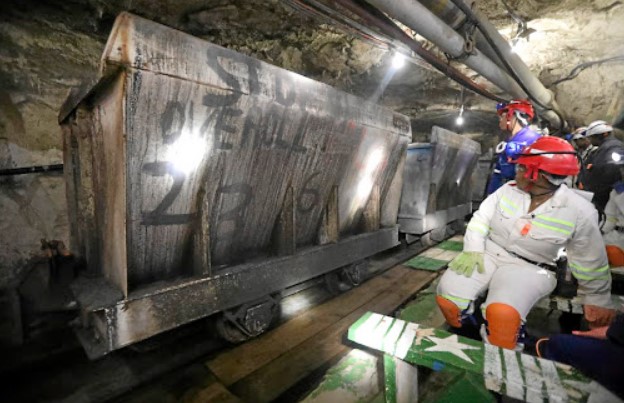Underground Mine Gases

Underground mines contain a variety of gases. Some of these gases occur naturally, while others are a result of human activity. Some of the most common gases in mines are:
- Methane
- Carbon monoxide
- Hydrogen Sulphide
Each of these gases can be a serious danger to the safety and health of miners. It is therefore important that miners are aware of each gas’s dangers and take the necessary precautions to protect themselves.

GET IN TOUCH
In a hurry? Call us at +1-724-515-4993
1. Carbon Monoxide
Carbon monoxide poisoning is a serious danger when working underground. CO is an odorless and colorless gas produced by engines, generators, and other mining equipment. CO inhalation can lead to symptoms such as headaches, nausea, dizziness, and fatigue. It can cause unconsciousness and even death in severe cases.
CO poisoning can be prevented by:
- Regularly monitoring CO levels with a sensor
- Checking ventilation systems to ensure they are working properly
- Avoiding the use of gasoline-powered equipment in enclosed areas
- Never letting your engine idle inside a mine shaft
You should seek medical attention immediately if you feel symptoms of CO poisoning.
2. Methane
Underground mines are often a source of methane, which can be a safety risk. Methane can build up in enclosed spaces to dangerous levels. Mines use methane detectors to monitor the levels of methane. Workers are also trained to evacuate if they detect methane.
Gases like methane are often found in mines. Methane is highly explosive, and it can quickly build up in enclosed spaces to dangerous levels. Mine workers are trained to use methane detectors to monitor the methane levels in the mines.
Mine explosions involving methane have been responsible for many deaths over the years. It is, therefore, vital that workers are made aware of these dangers, and they know how to evacuate safely if needed.

GET IN TOUCH
In a hurry? Call us at +1-724-515-4993
3. Hydrogen Sulfide
Decomposing organic matter produces hydrogen sulfide, which is a colorless and flammable gas. Inhalation of hydrogen sulfide can be fatal. It is commonly found in underground mining. Hydrogen sulfide can cause headaches, nausea, and breathing difficulties.
Inhaling hydrogen sulfide in high concentrations can lead to unconsciousness or death. This gas can cause suffocation by interfering with the body’s oxygen-using ability. A concentration of 100 parts per billion (ppm) is immediately harmful to health and life. Even low concentrations of benzene can cause eye irritation and coughing.
What is mine damp?
A mixture of gases is called mine damp. Mine damp is usually composed of methane and carbon dioxide. Mine damp is dangerous, as it can cause explosions and asphyxiation.
Ventilation is necessary when mine damp is present to prevent an explosion. Wear a gas mask if you’re working in a mine damp area.
How To Detect Poisonous Gases In Coal Mines
It is vital to be aware that there are poisonous gases in coal mines. Each method has its advantages and disadvantages. Gas detectors are one way to detect toxic gases. A gas detector measures the amount of gas in the air.
Combining different methods is the best way to detect toxic gases. Gas detectors are used to monitor air quality. These methods will ensure that you work in a mine as safely as possible.
How To Avoid The Effects Of Toxic Gases In Mines
In mining operations, hazardous materials can emit toxic gases. These gases are extremely dangerous and can cause death to workers. These gases can be prevented in several ways, including:
- Proper ventilation is important to prevent the accumulation of toxic gases. Ventilation systems circulate air throughout the mine and can help dilute or eliminate dangerous gases. Ventilation systems can’t always eliminate all gases, so you need to use them in conjunction with other methods such as gas detection.
- Use gas detectors. Gas detection can alert workers to the presence of dangerous gases. The workers should be taught how to use the devices and what they should do if a gas is detected.
- Personal Protective Equipment: Personal protection equipment, such as respirators, may help protect workers from hazardous gases. The workers should be trained properly on how to operate this equipment.
- Good Housekeeping: Good practices in housekeeping can prevent the accumulation of harmful gases. Keep all areas clean and clutter-free.
- Regular Maintenance: Regular upkeep of ventilation and equipment can prevent hazardous gas releases. All equipment should undergo regular inspection and maintenance.
Here are a few ways mines can avoid toxic gas formation. These precautions will help mines keep their workers healthy and safe.

GET IN TOUCH
In a hurry? Call us at +1-724-515-4993
Protect Yourself From Harmful Gases In Coal Mines
Rapid detection on-site is essential to prevent worker deaths and accidents. Newcastle Safety Servicing gas detector equipment is required for all miners who are responsible for underground work. Gases and fumes that are toxic to humans can be found in many places, including underground. Workers should, therefore, always exercise caution when working near these gases.
Contact Us Today!
Don’t compromise on safety. To learn more about safety equipment for miners contact Becker Wholesale Mine Supply today to discover how our innovative and reliable PPE solutions can keep your miners safe and your operations running smoothly. Your miners deserve the best protection—choose Becker Wholesale Mine Supply for a safer tomorrow!
Products That We Offer
- VHF Leaky Feeder System
- UHF Leaky Feeder System
- SMARTSENSE®FIXED MONITOR
- RNG-500VHF Leaky Feeder Cable
- UHF Low Loss Leaky Feeder Cable
- Kenwood NX-203/303 Radios
Take control of your mining communication systems today! With Becker Wholesale Mine Supply, the leading manufacturer in the USA. Contact us now and revolutionize your mining communication systems!